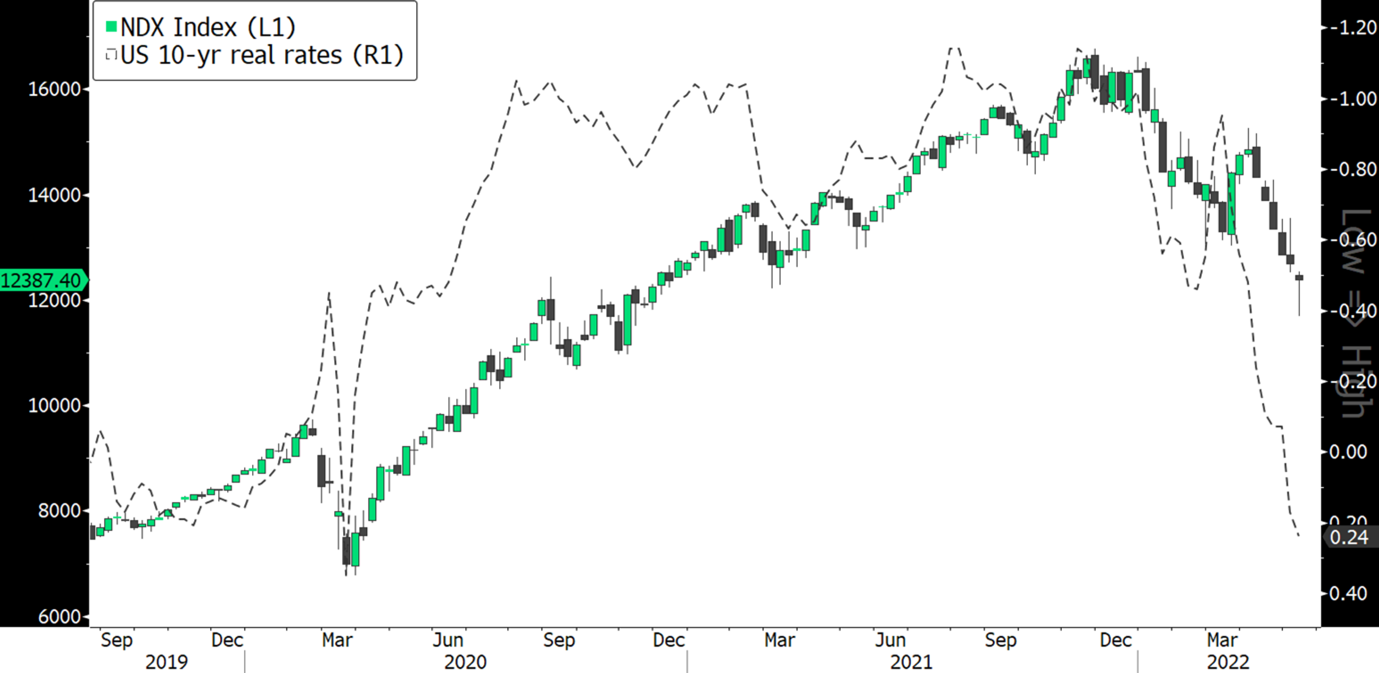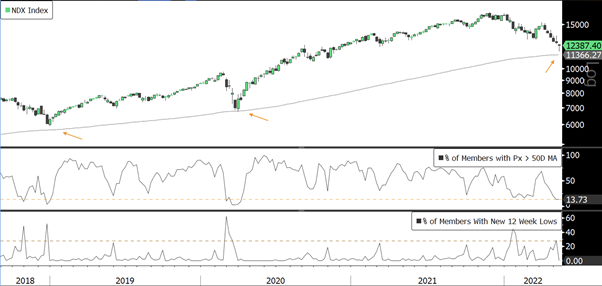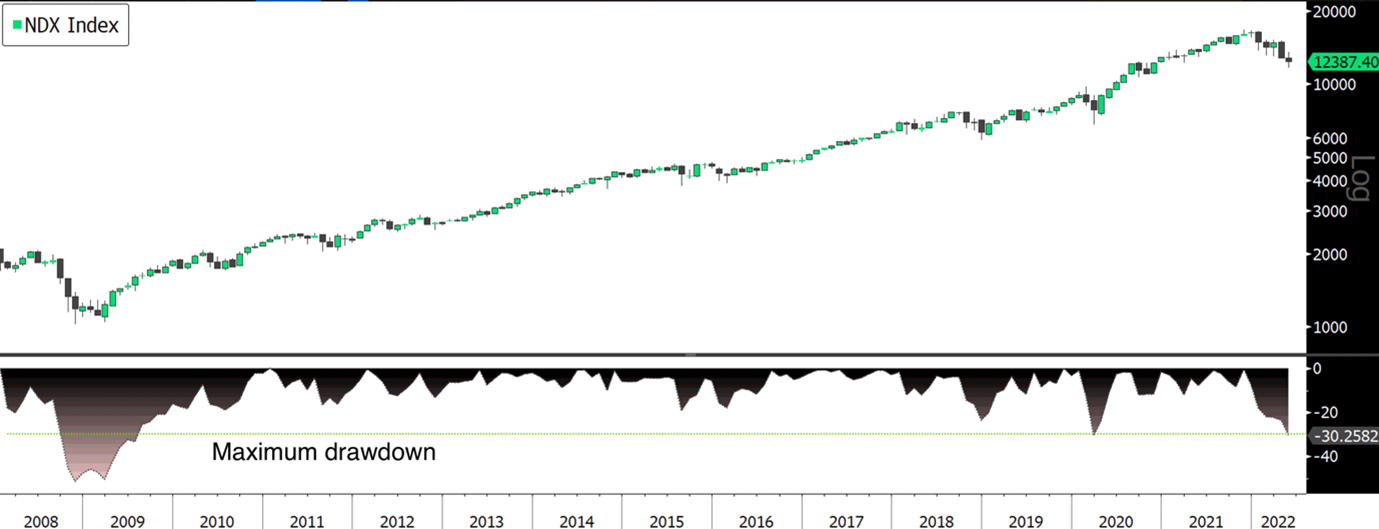The average price-to-earnings (PE) ratio for US technology stocks has contracted sharply since the beginning of the year, with the Nasdaq PE ratio falling from around 37 to around 25 in only 4 months. Are we close to reaching a bottom?
The year has been very complicated so far, evidenced by cross-asset returns that are unusually bad and wide-ranging uncertainties that include how fast the Federal Reserve tightens its policy, whether Europe sees an energy crisis, and how China addresses COVID. Overall, while fundamentals weigh on sentiment, technicals point to oversold regions.
Federal Reserve tightening, a strong dollar, and a looming growth outlook
The Fed is attempting to keep up with runaway inflation by taking an aggressive stance on rate increases. During the last FOMC, Fed Chair Jerome Powell stated that “the labor market is very strong, and inflation is much too high,” forcing the central bank to take 'necessary steps' to address the decade-high inflation numbers. While Chair Jerome Powell stated that future rate increases would be data-dependent, asset prices continue to fall, pressured by rising real yields, which turned positive for the first time since COVID. Rising real yields are increasing the burden on growth stocks as capital becomes more difficult to come by.

In addition, rising real yields (and interest rate differentials) led to a stronger dollar which is also weighing on asset prices. The dollar index has risen to its highest level in over two decades. While a stronger dollar acts against inflation in the US, it does create instability in the credit market and hurts emerging economies, which deteriorates the growth outlook.
Speaking of growth, Europe and China are also encountering economic hurdles. Europe is facing an energy crisis as a result of the sanctions against Russian oil imports, which had led to disruptions in the flow of oil to Europe, putting pressure on European economies. And China's zero-covid policy is raising concerns about the country's ability to keep growing. Affecting 26% of GDP, strict lockdown measures in China, the world's biggest exporter, have led to long-lasting supply chain disruptions, becoming one of the factors behind the increase in costs and prices across the globe, leading to a worsening growth and inflation outlook.
PE contraction, moving averages, and maximum drawdowns
The valuation gap between US mega-caps and the rest of the index has contracted over the past several months. The top six market-cap names in the S&P500 (Apple, Microsoft, Google, Tesla, Netflix, and Amazon) trade at a market-cap-weighted forward PE of 25.3x, down 32% from the group's 37.3x at the beginning of the year. In contrast, the S&P500's forward PE is currently at 20x, implying the top-six still are trading at a 25% premium, which is slightly above the pre-pandemic average premium of 18.5%, leaving further downside risk.
Sentiment has grown darker as traders’ fundamental view has become influenced by recent price action. A key question is whether there's enough worry and concern in the market to help it. After all, if most investors are already negative, it can be harder for bad news to push the market lower and easier for any good news to push the market higher. To quantify market sentiment and fear, let’s consider the following graphs:

The 200-week moving average has historically been a good indicator of when the markets bottom. It correctly signaled a reversal during the 2018 market crash and even the 2020 COVID induced fire-sale. Currently, the index price level trades at very close levels to the indicator. If history is any guide, then the 11’300 level should provide a floor to the Nasdaq. Similarly, other technicals also point to oversold levels, though markets have seen periods of more extreme levels.
The tech-heavy Nasdaq has seen its maximum drawdown increase over the past months. Maximum drawdown is defined as the peak-to-trough decline of an investment during a specific period, usually quoted as a percentage of the peak value. The Nasdaq hit its all-time high in November 2021, and the index has been on a downward trajectory since then. It has fallen 27.8% from that peak, slightly below the 28.1% in 2020, but otherwise the largest since the 2008 bear market. While it is difficult to say if the equity market’s distress is over or not, investors are starting to identify areas of value created by steep share-price drops even in the technology sector.

In short
A mixed supply chain picture and a Fed that will likely stay on track to fight inflation through higher interest rates represent major headwinds to risk assets. However, extreme levels of poor sentiment and selling may indicate that the worst is behind us and that the risk-reward is improving. Macro risks notwithstanding, the US economy remains in good shape and corporate profits are strong. While many fear further corrections, for others it is an opportunity to buy, if not build a position for the longer term.




